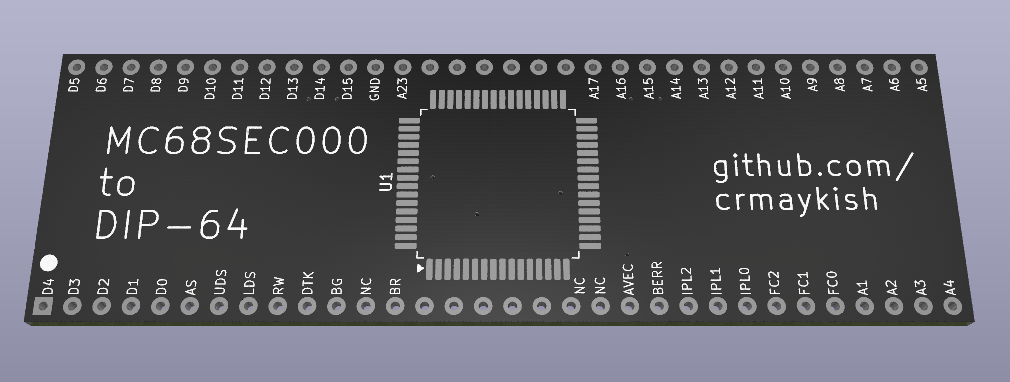The goal of the Mackerel project has always been to slowly work my way through the Motorola 68k CPU family, building new computers with each iteration. With Mackerel-08 fully operational, it's time to start thinking about its bigger brother, the 68000. Since building the same computer again with a faster CPU is not that interesting or enough of a challenge on its own, I'd like to add enough additional complexity with each new CPU to justify calling this a new computer.
For Mackerel-10 that means three things:
1. 68000/68010 CPU - either CPU should work in this system, but I will likely be using the 68010 for the relocatable vector table and the potentially higher clock speeds.
2. DRAM - this is the big one. uClinux will definitely take advantage of more RAM and I plan to fill almost the entire 16MB address space of the 68010 with DRAM. I have a 4x4MB kit of 30-pin SIMMs and the appropriate sockets. I will be building a DRAM controller in an Altera EPM7128 CPLD to utilize it.
3. IDE - Mackerel-08 has persistent storage in the form of a bit-banged SD card, but it is quite slow (somewhere around 3-5 kbps at best). I would like Mackerel-10 to have a full IDE interface for use with a real hard drive or a CF-to-IDE adapter.
Although I just said building the same computer again is not the goal, that's basically what I've done here:

There are enough changes going from the 68008's 8 bit data bus to the 68010's full 16-bit bus and I've switched from using 22V10C GALs to a EPM7128 CPLD for glue logic, so I'd like to build this core system before adding DRAM and IDE hardware. This is also the first computer design I've done without building a hand-wired prototype or breadboard proof-of-concept first. Fingers crossed.
This first PCB includes the 68010 CPU, 1MB each of ROM and SRAM, and the same XR68C681 DUART as Mackerel-8. If all of this works as expected, I will build a second board for the IDE and DRAM. This can connect back to the main system via the two 40 pin box headers. Once that second board is proven, I'll combine the designs back into one SBC, probably using the ITX form factor.
As an additional little diversion, I've purchased some MC68SEC000 CPUs. They are rated to 20MHz, but I have read that many of them are stable at 50 MHz or higher. Sounds exciting! The SEC variant is basically a static version of the 68EC000 CPU, which is itself, a CMOS version of the 68000. I think it should be drop-in compatible with the original 68000 footprint provided there's an appropriate adapter. I was inspired by the Minimig project, but I couldn't find a source for their adapter, so I made my own:

I don't know if this will actually work, but it should be an interesting experiment. KiCAD project and Gerbers are available for this adapter on Github, but use at your own risk. This is still untested.
https://github.com/crmaykish/adapters-and-breakout-boards/tree/main/MC68SEC000-to-DIP-64
 Colin M
Colin M
Discussions
Become a Hackaday.io Member
Create an account to leave a comment. Already have an account? Log In.